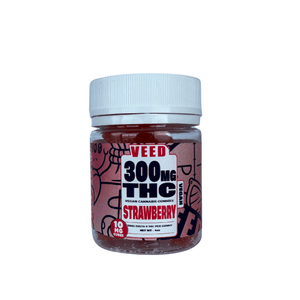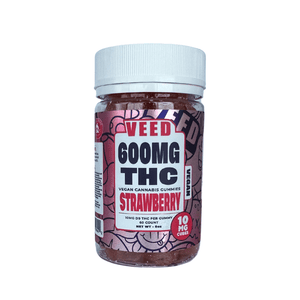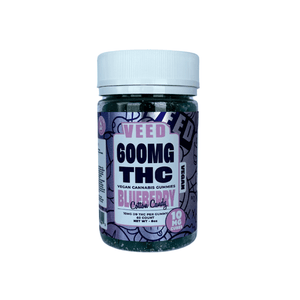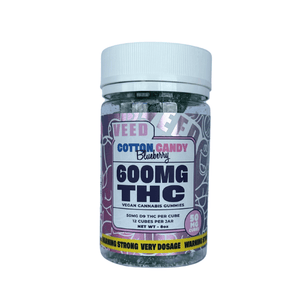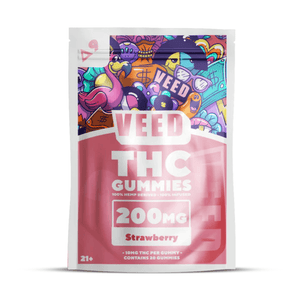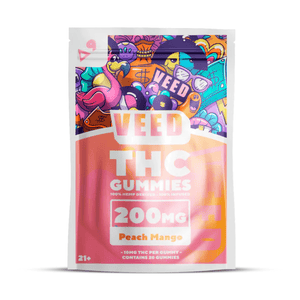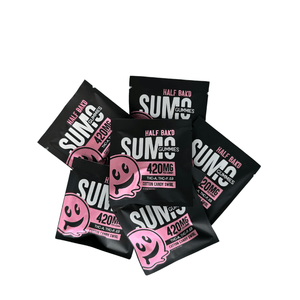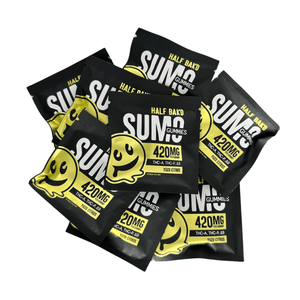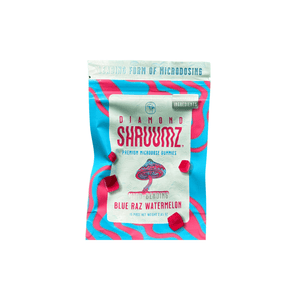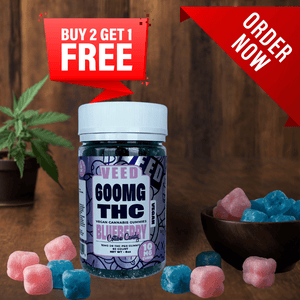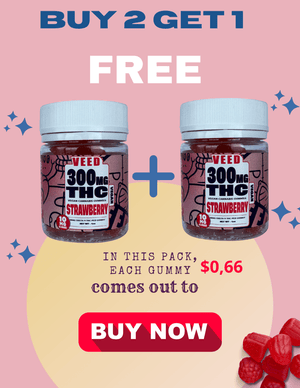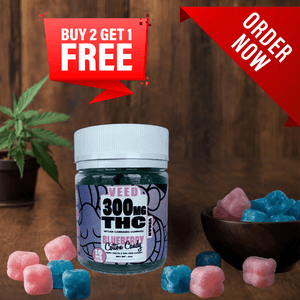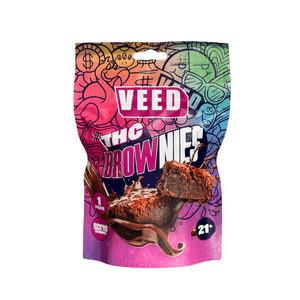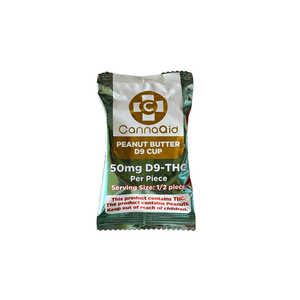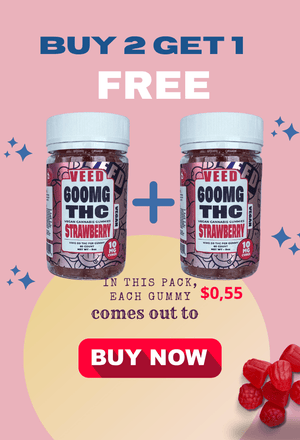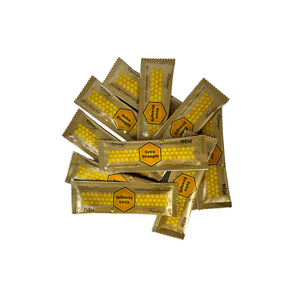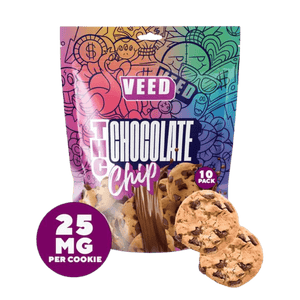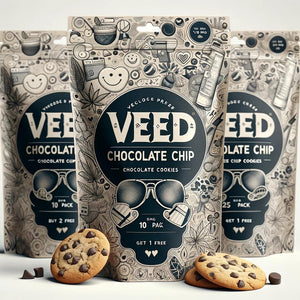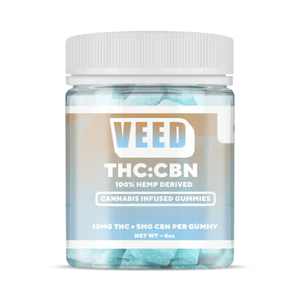HOW TO TALK TO CHILDREN ABOUT THC GUMMIES
WHAT TO DO IF YOUR KIDS WANT YOUR “SPECIAL” GUMMIES
Talking To Your Kids About Cannabis Edibles and Cannabis Gummies
DISTINGUISIGHING THC CANDIES FROM REGUALR CANDIES
In today's landscape, where the distinction between adult consumables and children's treats becomes increasingly blurred, parents face the unique challenge of addressing their children's curiosity about "adult-only" candy. This challenge is particularly pronounced with THC gummies, which, to the untrained eye, can look remarkably similar to the innocuous gummy bears loved by kids worldwide. As THC-infused products gain popularity and become more widely available, it's crucial for parents to navigate these conversations with care, ensuring that children understand why certain treats are off-limits to them.
The cornerstone of preventing accidental ingestion of THC gummies by children lies in clear communication, secure storage practices, and the utilization of child-safe packaging. Companies like Veed are leading the way in this regard, offering products designed to minimize the risk of children mistaking them for regular candy. This introduction sets the stage for a discussion on effective strategies parents can use to talk to their children about "adult-only" candy, emphasizing the importance of keeping such items out of reach and explaining the role of child-safe packaging in preventing accidental access. Through this guide, parents will gain insights into fostering an environment of safety and understanding, ensuring that their children feel informed and protected.
EXPLAINING "ADULT-ONLY" CANDY TO CHILDREN
Talking to kids about why some treats are only for grown-ups doesn't have to be daunting. Think of it as explaining why they can't drive a car or stay up as late as you do. It's all about keeping them safe and happy. Here's how you can make this chat as easy and positive as possible, especially when it comes to those tempting THC gummies that look just like the candy they love.
Keep It Simple and Straightforward: Kids appreciate honesty. You can say something like, "You know how some movies are just for grown-ups? It's the same with certain candies. They have ingredients that aren't good for kids, but they're okay for adults."
Use Familiar Comparisons: Relate it to something they understand. "Just like medicine, some things are helpful for adults but can be harmful to kids. That's why we keep them out of reach."
Focus on Safety: Emphasize that the main reason some candies are for adults is to keep everyone safe. "Our job is to make sure you have the best and safest treats. That's why we pick out special ones just for you."
Be Clear About Differences: Explain that even though they look the same, "adult-only" candy has special ingredients meant only for grown-ups. "These gummies for adults have something called THC, which isn't safe for kids. But don't worry, we have plenty of yummy treats that are perfect for you."
Encourage Questions: Let them know it's okay to ask about anything they're curious about. "If you ever see a treat and wonder if it's okay for you, just ask me. I'm here to help figure it out."
By approaching the conversation with kindness, clarity, and a bit of creativity, you can help your child understand why certain treats are off-limits, without making them overly curious or worried. It's all about creating a safe, open space where they feel comfortable talking to you about anything, even "adult-only" candy.
THE IMPORTANCE OF SAFE STORAGE FOR THC PRODUCTS
Keeping those "adult-only" gummies away from curious little hands is super important. It's like making sure the cookies are on the top shelf so they're not gone in one afternoon. Except, with THC gummies, it's not just about spoiling their dinner; it's about keeping them safe. Here are some tips to make sure those grown-up treats stay out of reach:
Find the Perfect Spot: Choose a storage place that's not just high up but also out of sight. A locked drawer or cabinet works great. Think of it as the secret stash spot that only you know about.
Use Child-Proof Containers: Just like you'd keep medicine in child-resistant bottles, do the same with THC gummies. Some containers need a code or a key to open – use those. It's like a treasure chest that only grown-ups can open.
Make It a Habit: Always put the gummies back in their safe spot right after you use them. It's like putting your keys on a hook so you don't lose them. Consistency is key to making sure they're always safely tucked away.
Talk About It: Let your kids know that you're keeping these items safe because you care about them. You don't have to go into detail, just a simple, "We keep certain things away to make sure everyone in the house stays safe," will do.
Check In Regularly: Every now and then, double-check your storage methods. Kids get taller and more curious, so what worked a few months ago might not be foolproof now. It's like updating your password to keep things secure.
By putting these safe storage practices into action, you're taking a big step in protecting your kids. It's all about being proactive and making sure that the only treats they're getting into are the ones meant for them. Plus, it gives you peace of mind, knowing that your "adult-only" candy is where it should be, safe and sound.
ROLE OF CHILD-SAFE PACKAGING FOR EDIBLES
When it comes to keeping our kids safe from those "adult-only" treats, child-safe packaging is a real superhero. It's like the safety cap on a bottle of vitamins—there to make sure that the little ones can't get into something they shouldn't. Here's how child-safe packaging, like the kind Veed uses, makes a big difference:
Tough for Tiny Hands: Child-safe packaging is designed so that it's really hard for kids to open. It might involve pushing down and turning, or even solving a little puzzle. It's like the child-proof locks on the cleaning supplies cabinet—tricky for kids but easy for adults.
Clearly Marked: Packaging that's meant for adults only comes with clear labels to let everyone know. It's kind of like the "hot" warning on a coffee cup, but for THC gummies. This way, even if a child sees it, they (and you) know it's not for them.
Not So Appealing: The best child-safe packaging isn't just secure; it also doesn't look fun or yummy to kids. Veed, for example, chooses designs that won't catch a child's eye, unlike those colorful, sparkly stickers they love. It's all about making sure the packaging says "boring adult stuff" instead of "eat me!"
Education for Parents: Companies that use child-safe packaging often also take the time to educate parents about the importance of safe storage and keeping these products out of children's reach. It's like getting a manual with a new gadget, but this one tells you how to keep kids safe.
Going the Extra Mile: Veed and companies like it really care about keeping kids safe, so they invest in creating packaging that's both secure and responsible. It shows they're thinking about more than just following the rules—they're looking out for our families.
Child-safe packaging plays a crucial role in our team effort to protect kids from accidentally munching on "adult-only" candy. By choosing products that prioritize safety right from the packaging, we're all doing our part in making sure our homes are safe and happy places for everyone.
WHEN KIDS ASK FOR "ADULT-ONLY" CANDY
So, what do you do when your little detective spots those "adult-only" gummies and wants to try some? It's a moment many parents dread, but with a calm approach and the right words, you can navigate this tricky conversation smoothly. Here's how to handle it:
Stay Calm and Collected: First off, keep your cool. Reacting strongly could make those gummies seem even more intriguing. It's like when you tell a kid not to do something, and suddenly, that's all they want to do.
Use Simple, Clear Explanations: No need for complicated details. A straightforward "These are special treats for grown-ups because they have medicine in them" can go a long way. It's similar to explaining why adults drink coffee but kids don’t.
Reinforce Safety: Emphasize that certain things are kept away from kids to keep them safe, just like how you wouldn’t let them cross the street alone. "Just like we wear helmets when we bike, we only eat treats that are safe for us."
Offer Alternatives: Redirect their interest by offering a kid-friendly treat they love. "I know those look yummy, but I have something even better for you." This way, they don’t feel like they’re missing out.
Encourage Open Dialogue: Let them know it’s great they asked you about it. "I'm so glad you came to me! If you ever see something and are curious about it, always ask me first, okay?" This builds trust and keeps the lines of communication open.
Praise Their Curiosity: Acknowledge that it's normal to be curious and that you're proud of them for asking questions. "It's really smart of you to ask about things you're not sure about. That's how we learn new stuff!"
By tackling the conversation this way, you’re not just telling them “no,” you’re teaching them about safety, curiosity, and making healthy choices. It turns a potentially awkward moment into a positive learning experience for both of you.
TEACHING ABOUT SUBSTANCE SAFETY
It's super important to chat with our kiddos about staying safe around different substances, not just the "adult-only" candies. Think of it as part of the bigger picture, like teaching them to look both ways before crossing the street. Here's how to weave those safety talks into your everyday moments:
Start Early and Keep it Simple: Even young kids can understand basic safety ideas. Start with simple rules like, "We only eat things that are given to us by people we trust," kind of like how we teach them not to take candy from strangers.
Make it a Regular Chat: Substance safety isn't a one-time talk. It's more like reminding them to brush their teeth. Regular, casual conversations can help reinforce the message without making it feel like a big deal.
Use Real-Life Examples: If you see someone smoking or notice a character in a movie taking medicine, use it as a chance to talk. "See how they're only taking medicine because a doctor said it's okay? That's important for staying healthy."
Be Honest but Age-Appropriate: Kids are smart, and they'll ask tough questions. Give them truthful answers, but keep it appropriate for their age. You don't need to dive into complex issues to explain why certain things are harmful.
Empower Them with Knowledge: Teach them about the body and how it reacts to different substances. "Our bodies are like engines that need the right kind of fuel. Some things are like putting sand in the gas tank—it doesn't help us go."
Practice What to Say and Do: Role-play scenarios where they might be offered something unsafe. "What would you do if someone at the park offered you candy?" It's like a fire drill but for substance safety.
Highlight the Importance of Talking to Adults: Make sure they know they can always come to you or another trusted adult if they're unsure about something. "If you're ever wondering if something is safe, come ask me. I'm here to help you figure it out."
Teaching about substance safety is all about building a toolbox they can carry with them as they grow. It's not just about saying "no" to things; it's about understanding why and feeling confident in making safe choices. Plus, it's a great way to show them that you're always there to help navigate the tricky parts of growing up
SAFE STORAGE: KEEPING "ADULT-ONLY" TREATS OUT OF REACH AND SIGHT
When it comes to "adult-only" gummies, making sure they're out of reach and out of sight is key. Think of it like storing away those extra-special holiday gifts so the surprise isn't spoiled early. Here’s how to ensure those grown-up gummies stay hidden, keeping curious little ones safe and sound:
High and Hidden: Store your THC gummies somewhere high up where kids can’t see or reach them, maybe on the top shelf of a cupboard or in a locked cabinet. It’s like keeping the cookie jar on the highest shelf, but even more secure.
Lock It Up: Consider using a lockbox or a cabinet with a key. Kids are great explorers, but a lock can be the treasure chest’s secret that only you know. It adds that extra layer of "keep out" to really safeguard your stash.
Out of Sight, Out of Mind: Keeping these items hidden not only prevents accidental discoveries but also reduces temptation. If they don’t know it’s there, they won’t go looking. It’s like not letting them know there’s a hidden stash of Halloween candy.
Consistent Storage Spot: Always return the gummies to their safe spot immediately after use. Consistency is crucial; it’s like always putting your car keys in the same place so you don’t lose them—habitual safety.
Educate Without Exposing: You can talk about the importance of keeping certain things away from kids without showing them what those things are. It’s teaching them about road safety without letting them play in the street.
Review and Adapt: Kids grow and get more curious, so what worked last year might not cut it now. Regularly check if your storage methods are still effective. It’s like adjusting the baby gates as your toddler learns to climb.
By keeping "adult-only" treats like THC gummies well out of reach and sight, you’re creating a safe environment for your kids to play and explore. It’s not about creating a fortress but about making sure that the only treats they can get their hands on are the ones meant for them. This way, you can relax a little more, knowing your little ones are safe and sound.


